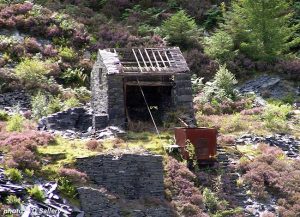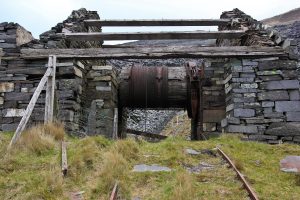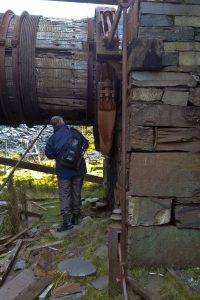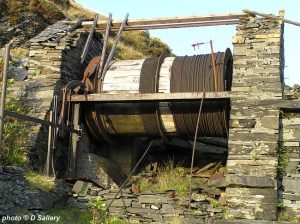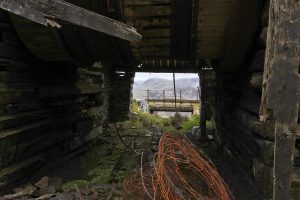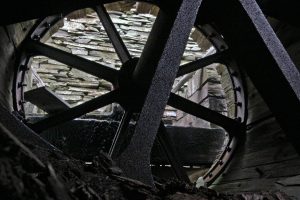This time of year is usually associated with drums, but we have been busy with a very different type of drum. The research is part of an Industrial Heritage Interpretive brief relating to Broughshane and Cargan. The project is being supported by Mid and East Antrim Council who are investing in the industrial heritage of the area and require an Interpretative plan and some fresh ideas on how to tell the amazing story of mills and mines in the area.
The mid-1800s saw an explosion of mining as iron ore was discovered and commercially extracted all across the Antrim Hills. Our task is to tell that story from a number of vantage points. The first is Drum Wood in Cargan, a Millenium wood planted by The Woodland Trust named after a structure on the local hillside – a legacy of mining times.
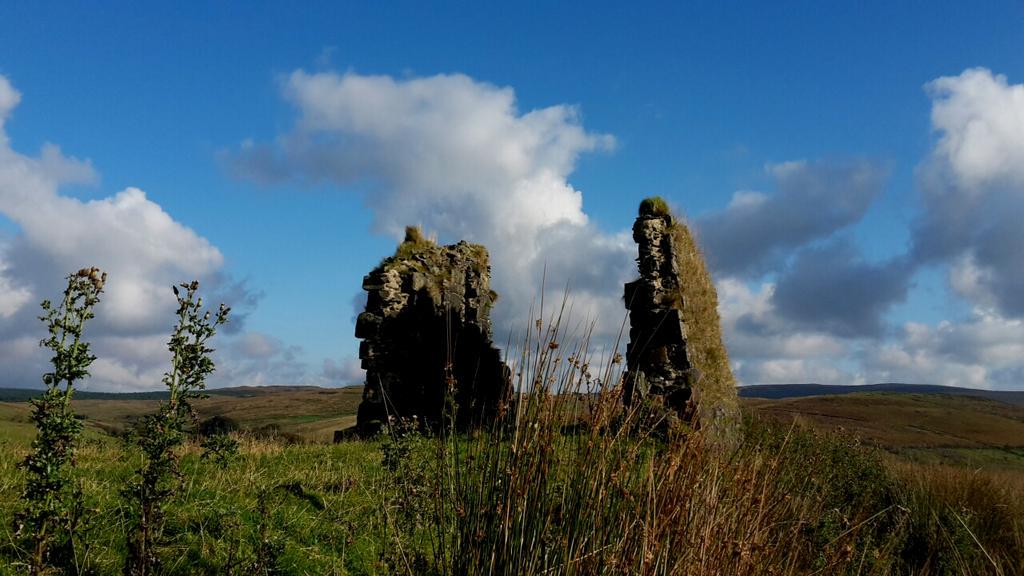
While it doesn’t look like much now this building was once a vital link in the transport of valuable iron ore from mines in the Antrim Hills, to what was Ireland’s first narrow-gauge railway on to a purpose-built harbour at Red Bay. Its hard when you stand on the wild hillside to imagine the village below as it was 150 years ago like a ‘Wild West’ frontier town, the hills behind a busy noisy place with the sound of pick and hammer, with rail tracks sketched across the hillside.
The structure above was central to all of this, called a Drum House, all this is left now are the two walls. The question for our history detectives is, what was it used for and what did it look like? There is nothing similar in the area, and few records of its existence, let alone its purpose and how it worked. The last men to see it in operation have long since passed, and its time predated photography, at least of industrial structures on wild Antrim hillsides.
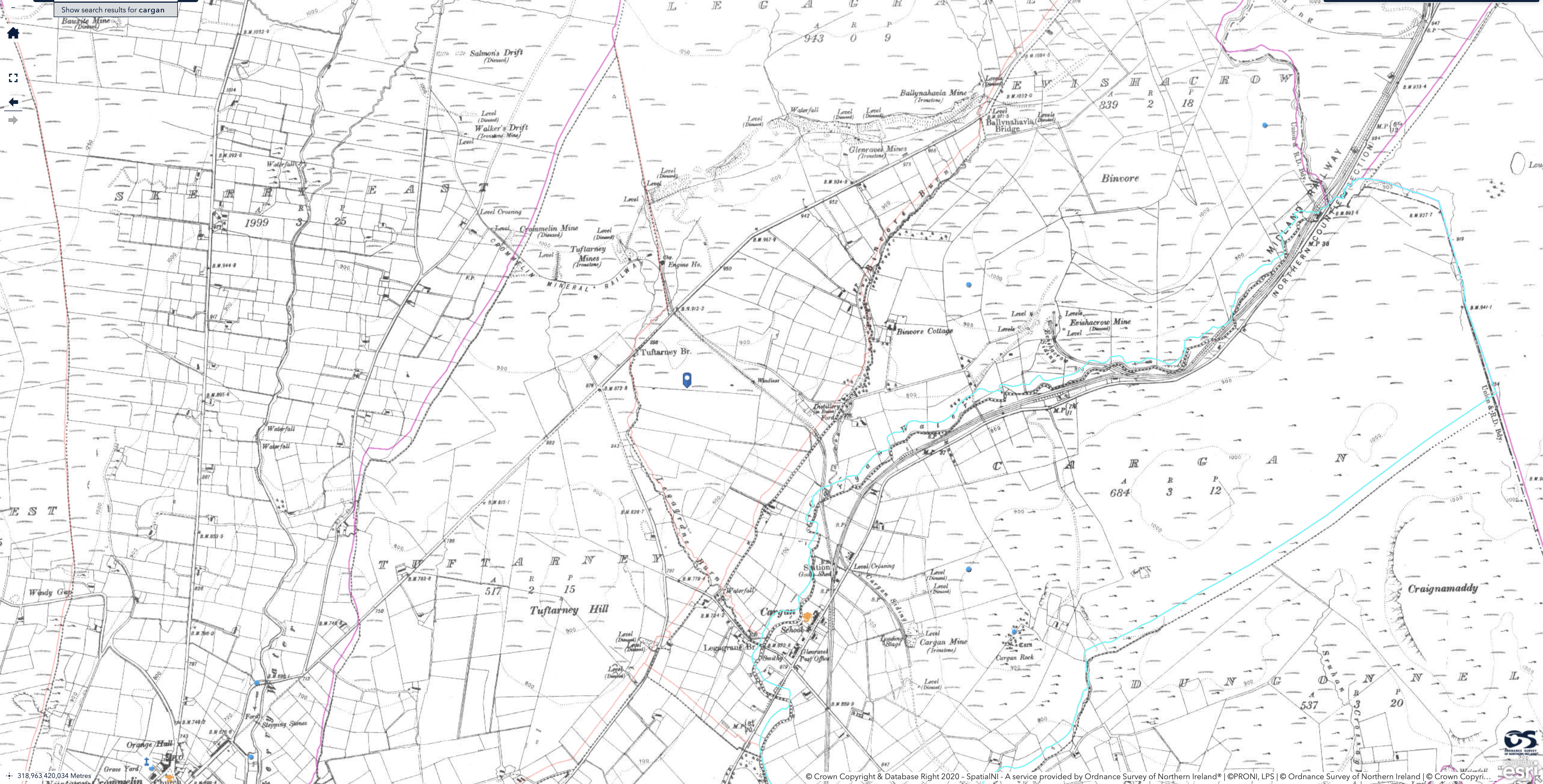
In contemporary maps, it is recorded as a Windlass, which gives us some clues, to its use. It was the vital link between mines farther up the hills and the sidings of Cargan station where trucks full of iron ore were loaded onto trains for the coast. We also see an engine house marked, however, it may have been used in connection with the Crommelin Mineral Railway or an earlier Overhead Wire Tramway, both of which are other very interesting stories.
Given the straight track shown on the map and the general lay of the land, shown on a site visit, our main line of inquiry about the drum house is about gradient incline systems. Here the story takes us to the slate mines of Wales, where similar scale operations were extracting slate around the same period. They too faced the same challenges of geography and typography. Their solution as we believe was devised at Cargan was to use nature to their advantage, to take the problem of the steep hills and use the gradient as a means to solve the problem.
The solution was a twin-track approach, where the weight of full wagons descending pulled up empty wagons at the bottom. The key was opposite winding wire ropes wound around a large wooden and metal drum at the top, with a brake mechanism. The skill of the brakeman was crucial, as tons of iron ore could career down to the village below if anything went wrong. Welsh mines give us better examples of the structure and system it housed, though they too are in decay. This unique and vital feature of mining and rail heritage needs to be further studied and preserved.
These more intact examples show what our Cargan, or to be exact Fisherstown Drum House may have looked like. it would have had a roof to protect the drum from the elements and a form of brake mechanism, with twin tracks leading to and from the house. While we cannot rule out an engine-driven mechanism, it more likely that engineers designed it to simply make use of gravity and the incline of the hillside which gives the system its name – the gravity incline method. This was an early example and while common in England this may be the only example we have in Ireland, certainly it was an important prominent enough feature to have lent its name to the area, and wood.
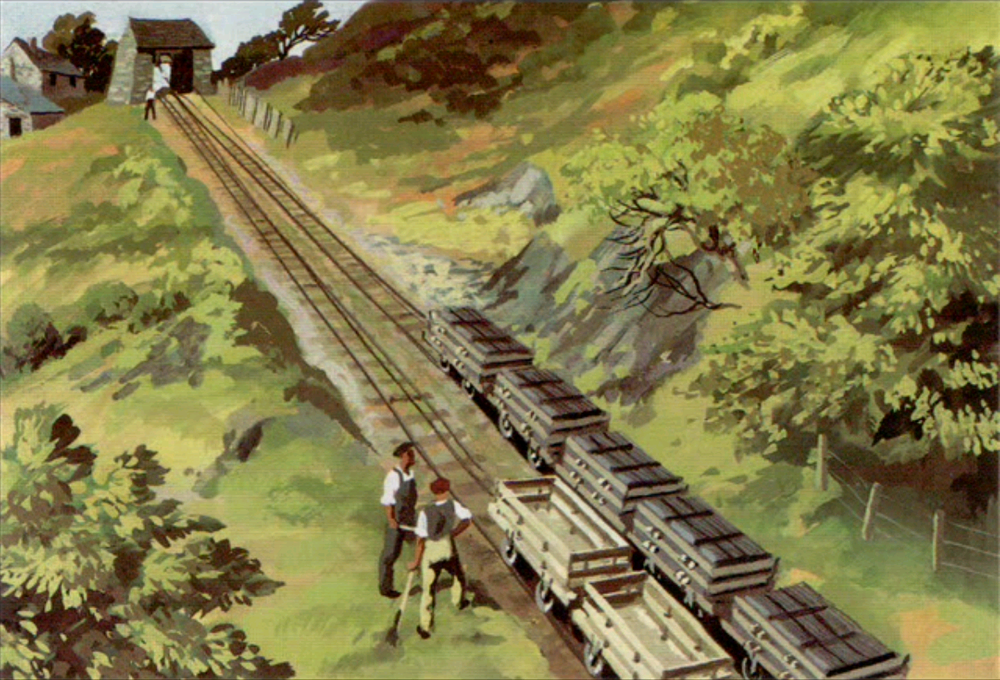
This gives us an indication of the drum house at work and will form the basis of any graphic illustration to recreate the feature, with perhaps more emphasis on the drum mechanism. While a piece of public art is in place, a stylised feature could be considered to illustrate this important piece of industrial heritage.

